How to Plan the Ultimate Family Vacation
------- without headaches -------
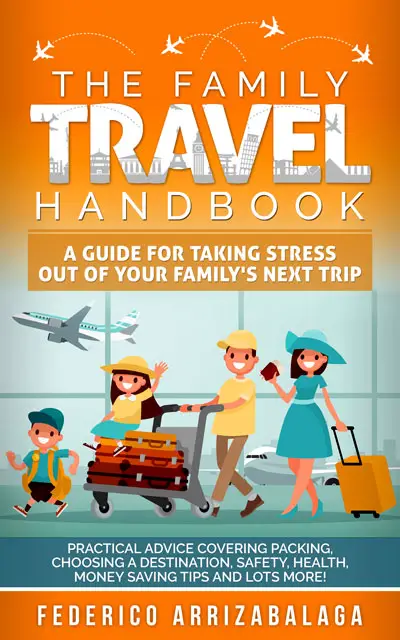
Traveling with kids under the age of 5 means tons of work... and tons of fun.
While preparing a trip with young kids requires planning, it's the actual traveling that means more work. You'll need more time AND will accomplish less. Yet if you'll be excited about visiting new destinations, seeing your kids' awe will make it even more fun! Plus locals from everywhere love young visitors, so expect unplanned memories.
At just 2 years old our son has been in 10 countries already
You might think that traveling with such a young boy is a waste of time (and money), but I dear say otherwise. Teo calls boiled eggs 'Wyoming eggs" (that's where he first ate them) and loves the oranges from Valencia (Spain). When he doesn't want to finish his milk bottle he asks me to "put it in the fridge for the airplane". He also knows that to travel you need a passport. Investing in travel is investing in education.
The Family Travel Handbook is 41 pages long and is organized into 9 main chapters, with tables, sub-chapters and colored pages for easy reading. Sure, you can spend countless hours and days searching online to find all this info (will you get it all?) or simply subscribe to my occasional newsletter and get it delivered in a nicely edited PDF ebook where you'll find what really works, as well as hands-on tips and advice that will make your family trip memorable.
By the way, I will not share your email with anybody – I hate spam too.
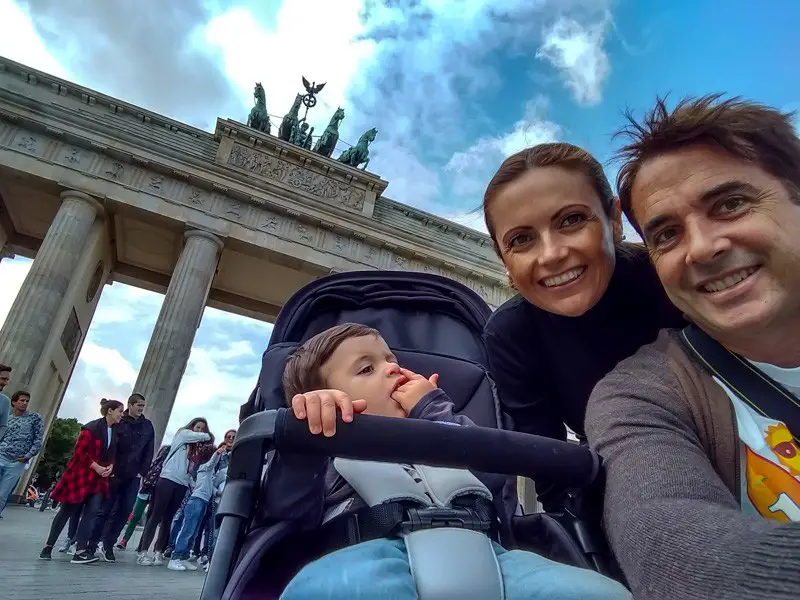
At the Brandenburg gate!
Having visited 80+ countries I have hands on experience on how to save money when traveling, how to make trips easy for you and your family, and what destinations are best according to your interests. If you have any questions I'm always happy to help you!
The Importance of Trip Planning
Just planning that big trip can be exciting, terrifying, liberating, excruciating and utterly overwhelming. All those feelings you’ll experience on the road are distilled in the planning stage, and the sheer emotional force of it can be surprisingly hard to deal with. But let’s relax, break it down, and go through how to plan a trip step by step.
The secret to a well planned trip is attention to detail, without losing sight of the big picture. That might sound like something you’d hear in a board meeting, but it really is true. It’s also a careful balancing act, where you’ll need to find that sweet spot between contradictory needs. For example, you probably feel the need to save money, which contradicts the need to just chill out and enjoy yourself. There’s another contradiction between wanting to see as much as possible, while still being able to savor the sights, sounds, tastes and tactile feel of your destination.
On the road, it can be easy to lose sight of this basic need; the need to balance competing interests, and really get the most out of your trip. That’s why it’s so important to get planning right. You can sit back and figure out what you really need to get out of the trip, while at the same time work out those little details and prepare for what could go wrong (and what could go right). If you want to learn how to plan a road trip, perhaps a trip to Europe or maybe even a trip to Disney World the advice in this (long) post should help you out.
1. How Much Will it Cost?
Assuming you already have a destination in mind, the most important first step is figuring out just how much you’re going to spend. As you might expect, the cost of travel can vary greatly, with the destination being the biggest factor. Even a glamorous, glitzy escapade in east Asia can be cheaper than a hostel haul in western Europe, so choose wisely.
Once you have a destination in your crosshairs, you should probably head over to Expatistan’s Cost of Living Index. As a traveler, this online tool is your best friend. It’ll give you a rough breakdown of the costs of everything from food to transportation, entertainment to clothing. Use it, and use it well. You can even click on each section for a breakdown of exactly what you’ll be getting for your money.
For example, clicking on the “housing” section will bring up details of how large you can expect an apartment or home to be, how much utilities will cost, and even what sort of internet speeds to expect. Yeah, it’s pretty incredible, right?
2. How Much Time Do You Have?
At this point, you should have a rough idea of how much you’ll be spending on average each day abroad. With that information, you can start thinking about how long you can afford to travel for. Or the other way around; you may know how much time you have for your trip overall and can start thinking about where you want to be in between.
One important insight to remember is that in general, shorter trips actually tend to be more expensive per day. After all, during a longer trip, you could rent instead of crashing in a hostel, and you’ll have more time to settle in and learn how locals live (hint: they live cheaper than travelers do).
One other thing to remember though; if you’re traveling with kids, expect way more delays. Sorry, but it’s just going to happen.
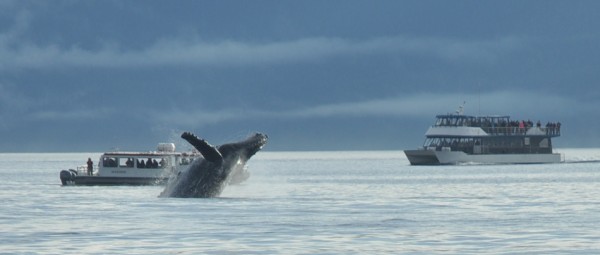
Those boats got a great show
3. How Will You Access Your Money?
Now that we have a destination and rough budget in mind, it’s time to consider arguably the most important thing of all: how will you access your money in your country of choice? This might seem obvious, but each country is totally different.
Generally speaking, bringing a debit card is the most secure way to access money, while hard cash to exchange typically provides better rates.
Personally, I usually travel with a mix of US dollars and two debit cards. One card goes in the wallet, and the other is kept somewhere more secure, like with a passport in a money belt. This system works well most of the time, though it’s still worth checking if your particular destination has any unusual preferences.
For example, in most countries, Cirrus debit cards are ideal, though occasionally Visa is preferred (on my first backpacking trip to Costa Rica I was stuck in San Jose without money. I had a debit card but was part of the Stratus network, and all ATM's were Cirrus. Thankfully a cab driver was nice enough to drive me around on that rainy night until I found one at 1 am, and I then invited him to dinner). Almost all bank cards are one or the other, and it should say on the front of your card.
Next, while US dollars are almost universally accepted, in some African countries you can sometimes get better rates for Euros.
Finally, things get even more complicated if you’re going somewhere a little off the beaten track, and you’ll find some countries have extremely weird financial systems. In Cuba, you’ll have to deal with Convertible Pesos, while in Algeria you’re probably going to need to change Euros on the black market, while your bank cards will be next to useless.
It’s a similar situation in Venezuela, where debit cards are rarely accepted by ATMS, and you’ll have to brace yourself for the Kafka-esque nightmare that is the country’s convoluted, nonsensical currency exchange system (let alone the inconvenience traveling there is today- I had a very unpleasant situation with the military and left earlier than planned).
Wherever you end up, the point is you’ll need to do your research beforehand, and know exactly how you plan on accessing your money.
4. Keep Your Bank in the Loop
This point deserves a section on its own, because it’s just so important. Many travelers forget to inform their bank of their travels, and end up stuck in the middle of nowhere with a non-functional debit card. Most banks geo-block withdrawals from unusual places.
So, if you’re from California, your bank will probably think it’s a little odd if someone tries to withdraw your savings from an obscure village in Colombia. Usually, the transaction will just be blocked, and it’ll be up to you to call the bank and let them know your card hasn’t been stolen, it’s just come with you on vacation.
Having said that, it’s better if you let your bank know ahead of time where you’ll be traveling, so you don’t end up having an awkward encounter with an ATM.
For what it's worth and despite the planning, I've had this happen to me even when traveling within Europe.
5. Documents
Now that we have the basics settled, it’s time to get your paperwork in order. If you don’t have a passport, you’ll need to allow a solid two months to get one. If you do have one, double check it’s valid for at least six months after you plan on finishing your trip. So if you’re traveling for six months, then you’d better have a passport valid for at least a year.
Will you need a visa? Like with currency, visas vary from country to country. In Japan, citizens of most western countries are granted visa free travel for 90 days on arrival. Next door in China, you’ll need to apply for a visa in advance. Again, the point is that every country has its own (sometimes easy, sometimes extraordinarily frustrating) way of doing things; and it’s up to you to just deal with it.
You'll have some advantages if you have two passports. Do your research, and allow plenty of time for your visa to be processed. If they say it’ll take two weeks, allow a month. Once at your destination remember how long you can remain in the country for, although it's always good to know what to do if you overstay your tourist visa.
Along with visas, you’ll also need to check your vaccinations are up to date. Again, each country has different vaccination requirements, which are usually available on their embassy’s website. One of the most common vaccinations you’ll need is for yellow fever. When you get this vaccination, you’ll be given a certificate. Keep the original with your passport, and run off a few photocopies just to be safe.
Other common vaccinations include rabies and hepatitis. Although you won’t be given official certifications for these, your doctor should provide some kind of documentation, including the date the vaccine was administered. Keep these documents, as they might come in handy down the track.
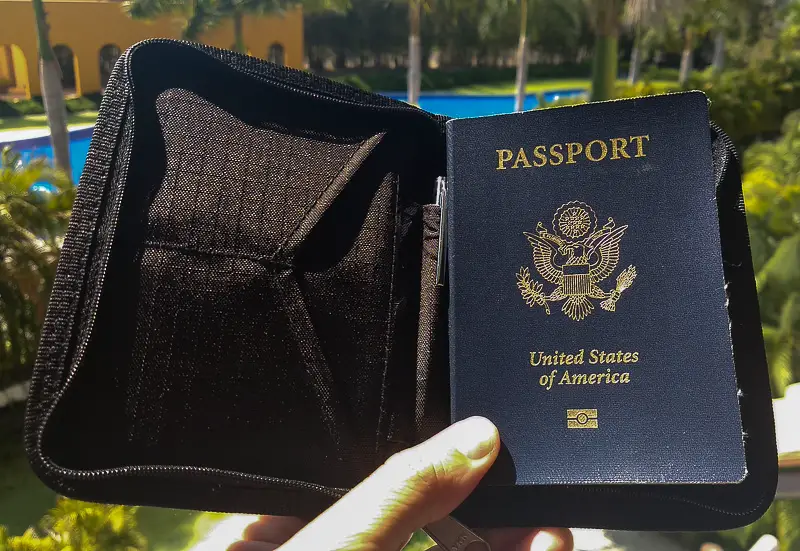
The passport case fits 2 passports, has two storage pockets and comes with a handy pen.
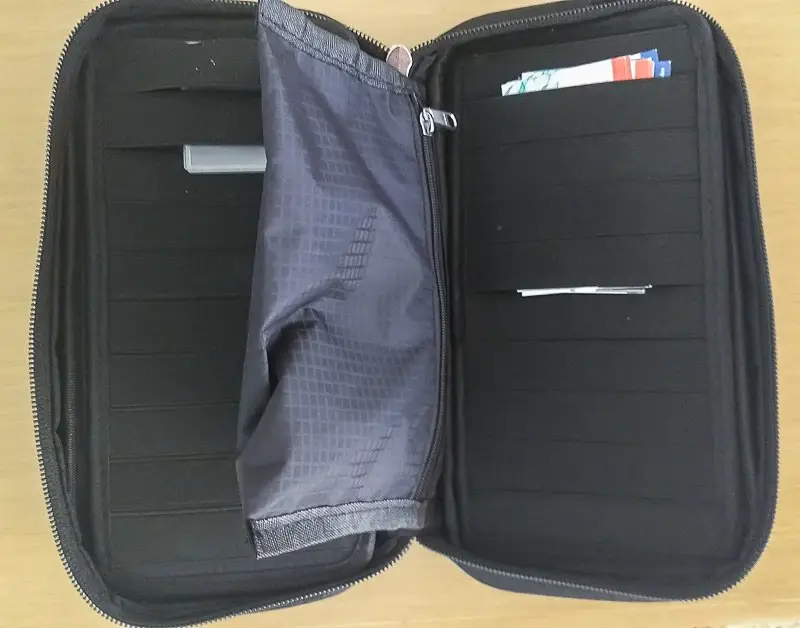
6. Book Your Flight
Odds are, the flight will be the most expensive part of the trip, so it deserves some special attention. As a general rule of thumb, the best way to book a flight is to stick to the extremes: book extremely early, or extremely late at the last minute. In this context the less of an (ahem) extremist you are, the more you’re going to pay. It’s also a good idea to shop around. A few popular sites include
Kayak
Skyscanner
Orbitz
Travelocity
Momondo (my latest secret weapon for flight booking)
I’d also recommend airfarewatchdog.com for comparing prices, and determining exactly what you should be paying.
Finally, sometimes the best rates come from the airline itself. If you can book through the airline’s website or physical offices, you can sometimes get surprisingly good deals. However you book your flight, after this step you might want to go back and reassess your budget.
7. Plan Your Vacation Itinerary
Finally, we’re at the best part of planning a trip: the itinerary. Generally, a well planned itinerary should be structured yet flexible. It should allow plenty of time for unexpected delays, while still giving you at least one activity to do each day.
This is where you can let your imagination run wild. Make a list of everything you want to see and do, and organize it all based on importance.
Then, see how much of it you can feasibly fit in your timeframe. If you’re hungry for intel, I’d recommend hitting up WikiTravel for a bird’s eye view of what’s popular at your destination. Reading your guidebook cover to cover is also a good idea, or you can plan your itinerary with Google maps.
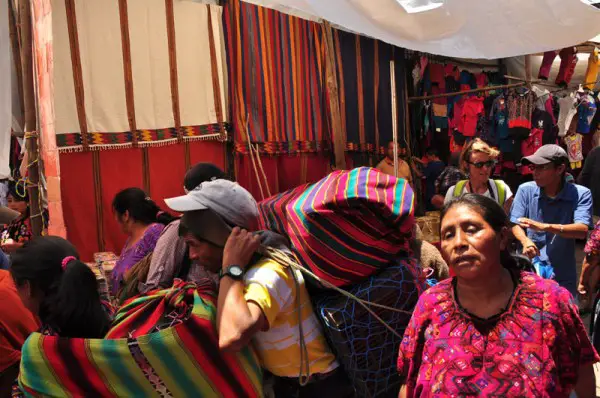
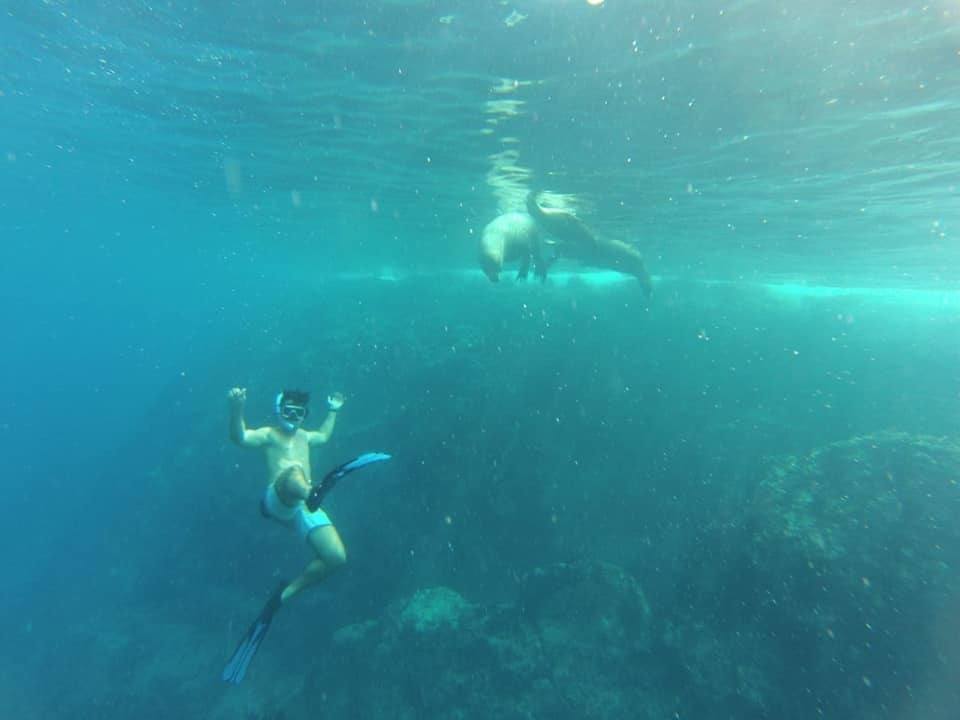
This was my first time ever swimming with sea lions in the wild.
There are some good travel planning apps out there too. Trover is great at showing point of interest at several distances from where you are. Tripit is fantastic for keeping records of where you want to be and when, logging reservations and flights.
Once again though, after doing your itinerary you may want to reassess your budget.
At this stage, another important thing you might want to consider is accommodation. Will you be staying in a resort, or hostels? Can you couch surf, or should you look at AirBnB? Your itinerary and who you're traveling with will influence this a lot. If you're traveling with your family you're always better off staying at apartments or hotels with large rooms and a kitchen.
If you’re spending a lot of time village hopping in Morocco’s Anti-Atlas Mountains, then AirBnB probably isn’t a good option, and you’ll be better off figuring out where to sleep on arrival. On the other hand, given the prices of hostels in London, you should probably opt for cheaper alternatives like couch surfing, if you can swing it.
8. Include the Kids
If you plan on traveling with kids, then you probably already know there’s going to be a few extra additions to the itinerary, not to mention just about every other aspect of the trip. This can sound daunting, but it’s really not too bad, if you’re prepared.
Firstly, if you’re traveling with kids, make sure to plan extra time in your itinerary for absolutely everything. If you think it’ll take you 10 minutes to get from A to B, double that assumption if you’ve got kids in tow. Traveling with a baby? Allow even more time, specially at airports.
Next, actually include the kids in the planning process. Ok, so, sure, you don’t have to give them the steering wheel, but you can throw them a few bones. Let them pick one or two attractions to visit. Talk the trip over with them, and try to get them excited.
The more the kids are looking forward to the trip, the fewer issues you’ll have on the road. Speaking of pre-trip preparation, why not sit together and watch some kid-friendly movies about the place you’re visiting? Teach them a little about travel, and maybe ask them to draw some travel scenes. Play some travel-themed games with them. Try to really focus on building up their natural desire to explore.
Once you do hit the road, remember to set boundaries, while still giving the kids the freedom they need. From day one, they’re going to want souvenirs. This is especially true if you visit a country like Mexico, which has a rich handicrafts culture, including absolutely amazing toys for kids. However, from that first day, set a maximum number of toys they can buy; otherwise, you’re going to come home with an extra suitcase overflowing with stuffed toys.
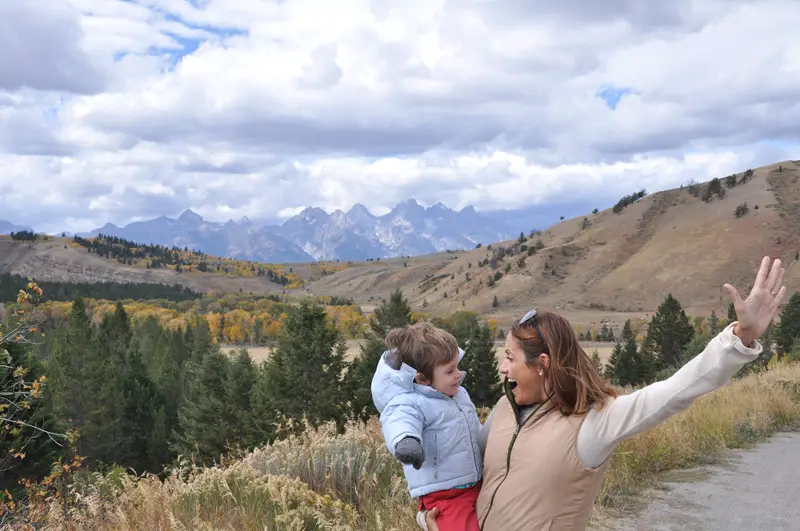

Having fun with Teo at the beach right in front of the hotel.
9. Packing
Finally, the moment has come when it feels like you’re on the edge of your adventure. Packing can be great fun, but generally should be done calmly, carefully and methodically. When I travel alone my ritual starts around two days before the trip, but now that I travel with my family much more often it starts about ten days early, when I roughly sketch out what I need. If anything obvious is missing, I head out and buy it.
Then, around a few days before departure, we get everything we plan on packing, and spread it out somewhere in my home. we organize it so we can see everything, and mull over my luggage over the course of the week. I might remove items, add extra things, and just generally muse over what I really need. It’s a slow process, but allows me to very carefully assess what I can’t live without, and what can stay at home.
Will you be traveling with a suitcase or a backpack? I prefer backpacks because I love having my hands free when walking around. When traveling with our son I can carry him around and push the stroller everywhere. If I know I won't be walking much then a suitcase will be just fine.
I’ll only actually pack my bags the day before I leave. I usually set aside the bulk of the day for this, and do it at a snail’s pace. Methodically, I’ll slowly pack each individual item, stopping every so often to reassess what I’ve done. During this process, I try to leave around a third of my bag empty, as this space will be needed for souvenirs. One great way to do this is to give the kids some pocket money. Once that money is spent, that’s their souvenir shopping finished!
If theft is something that concerns you, I recommend you consider anti theft travel gear. Liza and I have several anti theft bags and backpacks which have actually changed how we travel. When on the road my wife no longer takes a purse, but an anti-theft shoulder bag instead.
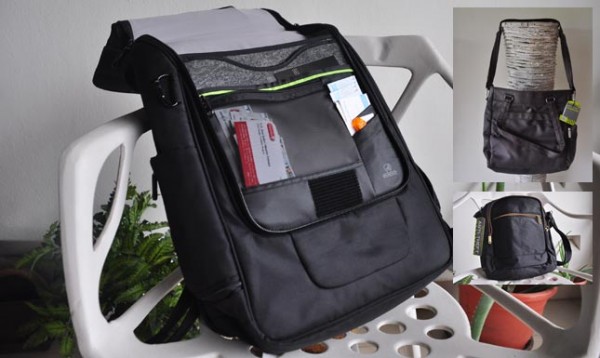
The backpack has plenty of storage compartments that allow you to have everything organized.
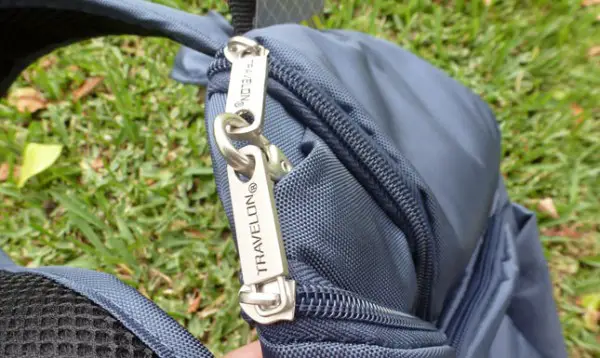
The zipper lock system used by Travelon
10. Research Crime
Most travel preparation lists I’ve read don’t include this, though personally I think this is extremely important. Travelers occasionally make great victims for criminals, ranging from violent kidnappings to elaborate scams. Every country has its own unique breed of lowlifes, so it’s worth being prepared for whatever they’ll be throwing at you. Do your homework, and you’ll be nobody’s fool.
11. Consider Food Issues
One other thing that often goes unnoticed until the last minute is food. Traveler diarrhea is something you’re bound to get, though there’s a few things you can do to minimize your risk before you leave. If you have a particularly sensitive stomach, consider asking your doctor for preventative medication. Pepto-Bismol is a popular choice, though it can cause constipation.
Also, a note on kids: many parents think travel is a good time to let your guard down, and allow the kids to go wild eating whatever they want. This is a recipe for disaster. You’ll end up with hyper-active kids who will ruin your holiday. Instead, try to keep your kids’ diets as healthy as they would be at home (or healthier).
Of course, let them try some new foods, and don’t be that parent at a local restaurant demanding french fries and ketchup. Instead, try to find local foods that give kids what they need, including fresh vegetables and fruits. In many countries, fresh produce is surprisingly cheap, so this shouldn’t be much of a problem.
12. Double check everything … then check it one more time
At last, you’re ready to head off!
… Or are you?
Before you relax, check everything. Check your budget is still realistic. Make sure your times and itinerary are more or less good. Ensure your papers are in order. Confirm you’ve packed everything you’ll need, and nothing you won’t need. Make sure you’re prepared for unexpected events, delays, con artists and every else you can imagine.
Then go back, and double check it all again.
This might seem tedious, but it’s better than spending your entire plane trip nervously wondering whether you remembered to pack your phone charger.
General Travel Tips
Traveling With Kids
